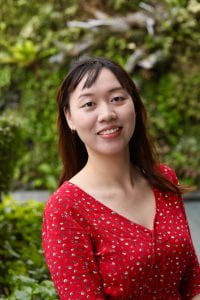
When we talk about languages in Singapore, we automatically think of Singlish. While it is true that Singlish makes our language landscape unique, we’re forgetting that we already have three other languages besides English—Mandarin, Malay, Tamil! These languages are referred to as our Mother Tongues. You’re probably wondering, “How can our Mother Tongue languages be uniquely Singaporean?”
While I was in Australia, I was delightfully surprised to find that not all Malay words I use were words Malay-speaking folks from other parts of the world were familiar with. They either use the same terms differently, or they’ve never heard of them in the first place! Here are some words that we use often here in our Red Dot but not necessarily anywhere else in the world:
Unique Singaporean words (in our Mother Tongue)
More commonly used as a verb “to lie”, Malay term bedek can also be used as an adjective “fake”, usually referring to an object. There’s a related Singlish term – Action bedek, used to refer to a pretentious person or someone who is all-talk-no-substance. Some Mandarin terms for everyday things such as HDB flats (组屋 – zǔwū) and Medisave (保健储蓄 – bǎo jiàn chǔ xǜ), is more common in Singapore than anywhere else in the world. Due to Singapore’s history and linguistic mixing, terms like kampongs (甘榜 – gānbǎng), markets (巴刹 – bāshā or pasar in Malay), and food (such as 沙爹 – shādiē which means satay), are what makes Singapore, well, Singapore. Perhaps this is why some words have found themselves in our Mandarin dictionary, much to the confusion of our fellow Mandarin speakers from overseas!
Same meaning, different words
In Malay, guna means “to use” while pakai means “to wear”. However, Singaporeans generalise the word pakai for everything, especially in conversations! It still gives some of us the giggles when someone says “tak guna” to say “(I’m) not using it” because to me, it means “I’m useless”. Other words that refers to the same things but uses a different word are found in food names, such as: roti prata, kuih dadar, puteri salat, roti kirai, and epok-epok (referred to as curry puffs or karipap in neighbouring countries—our karipap refers to another type of flaky pastry!) Mandarin speakers tend to use 老龄 (lǎo líng) instead of 乐龄 (lè líng) to refer to old people, and 德士 (déshì) instead of 出租车 (chūzūchē) for taxi.
Same word, different meanings
Originally a word for “strong” or “tough”, speakers of Singaporean Malay kental have given it a completely different meaning! Here, when we say someone or something is kental, we’re actually saying that they’re boring or lame. Cue the look of confusion on my housemates’ faces when I told them that a boring movie was kental!
Many Malay words that are “uniquely Singaporean” are often used in informal conversations and not in formal writing or speech. My Tamil-speaking friend that uniquely Singaporean Tamil words are also rare, especially in formal writing or speech. Words like chocolate are coklat in Malay and சாக்லேட் (cāklēṭ) in Tamil, which is essentially the English word written like how it would sound in Malay or Tamil.
Could you think of more words that are uniquely Singaporean? Do you use any of these uniquely Singaporean terms with babies or young children? We will be launching an online game soon to help us find out about terms that Singaporeans use with young children. Join us on our exciting journey by clicking here!
This post was drafted by Shaza Amran, Research Assistant on the BLIP team.










